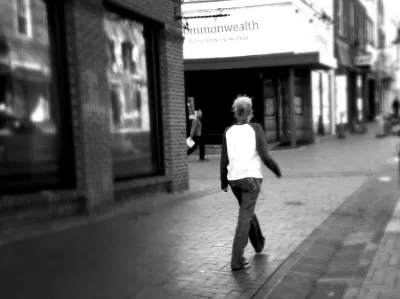Gender equality has never played such a prominent role in the design of public and urban spaces. The world needs more than superficial, reactionary measures to address the long history of public space as the physical realm of patriarchy.

"Urban planning and public-space design has long responded to existing uses, rather than creating opportunities for entirely new behaviors," according to an article by Jennifer Gardner and Larissa Begault in describing the kind of typical, reactionary approach to gender equality that has been celebrated as progress in the field for decades now.
Instead, the authors argue, gender equality in urban design requires a different approach that addresses root causes. "As social scientists, policymakers, and designers increasingly talk about pushing for inclusion in the field [of urban design] and designing for gender equality, we need to make sure actions address root causes, rather than just solve for superficial manifestations of a larger problem."
The article compares and contrasts examples from Vienna (an example of the first, reactionary approach) to New York City, Toronto, Rio de Janeiro, and more for the latter, deeper approach.
FULL STORY: How Better Urban Planning Can Improve Gender Equality

Alabama: Trump Terminates Settlements for Black Communities Harmed By Raw Sewage
Trump deemed the landmark civil rights agreement “illegal DEI and environmental justice policy.”

Planetizen Federal Action Tracker
A weekly monitor of how Trump’s orders and actions are impacting planners and planning in America.

The 120 Year Old Tiny Home Villages That Sheltered San Francisco’s Earthquake Refugees
More than a century ago, San Francisco mobilized to house thousands of residents displaced by the 1906 earthquake. Could their strategy offer a model for the present?

In Both Crashes and Crime, Public Transportation is Far Safer than Driving
Contrary to popular assumptions, public transportation has far lower crash and crime rates than automobile travel. For safer communities, improve and encourage transit travel.

Report: Zoning Reforms Should Complement Nashville’s Ambitious Transit Plan
Without reform, restrictive zoning codes will limit the impact of the city’s planned transit expansion and could exclude some of the residents who depend on transit the most.

Judge Orders Release of Frozen IRA, IIJA Funding
The decision is a victory for environmental groups who charged that freezing funds for critical infrastructure and disaster response programs caused “real and irreparable harm” to communities.
Urban Design for Planners 1: Software Tools
This six-course series explores essential urban design concepts using open source software and equips planners with the tools they need to participate fully in the urban design process.
Planning for Universal Design
Learn the tools for implementing Universal Design in planning regulations.
Clanton & Associates, Inc.
Jessamine County Fiscal Court
Institute for Housing and Urban Development Studies (IHS)
City of Grandview
Harvard GSD Executive Education
Toledo-Lucas County Plan Commissions
Salt Lake City
NYU Wagner Graduate School of Public Service





























